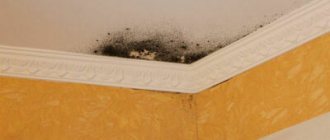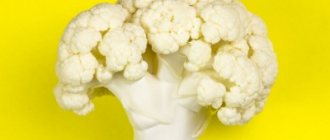We see paraffin on apples every day in large hypermarkets. Almost all shiny and beautiful apples are a product treated with paraffin and wax. It has been proven that paraffin on apples is not harmful to humans, of course, as long as the manufacturer used the approved composition. Nevertheless, many people want to know how to wash apples from paraffin in order to be guaranteed to eat a healthy product. Today we will talk about how to remove paraffin from apples. Read the next article on the pages of the magazine.
Paraffin on apples
In most cases, apples and even vegetables are rubbed with paraffin or wax in order to preserve their presentation. This can be confidently called a pure advertising move, since such a product looks really beautiful, appetizing and attractive. However, wax also has purely protective functions, which were known about many centuries ago.
Apples are coated with wax to prevent them from losing water and drying out. In other words, so that they deteriorate more slowly. For this purpose, partially processed natural waxes are used, and preservatives are often added to them to protect against fungi. Yes, this does not make apples healthier, but it also does not harm them much - we use the same preservatives with other products.
In most cases, apples and even vegetables are rubbed with wax to preserve their presentation.
At the same time, it is not recommended to peel the apple - it contains many times more antioxidants, vitamins and other beneficial substances than the pulp. The wax can be removed by rubbing the apple with a soft brush under running warm water.
How to remove wax from lemons?
Lemons are often coated with wax to keep the peel fresh and shiny. This wax is believed to be safe if eaten, but if you need lemon zest, it is best to remove this wax.
Method one: Boiling water
Boil the water. Fill the kettle about halfway and bring the water to a boil on the stove.
- You can use a small saucepan instead of a kettle. Fill it halfway with water and boil on the stove.
- If necessary, you can use hot tap water instead of boiling water. Make sure the tap water is hot enough before pouring it over the lemons.
Place the lemons in a colander. While the water is heating, place the lemons in a colander in a single layer. Place a colander in the kitchen sink.
- It's best to work with a small amount of lemons at a time so they can move freely in the bottom of the colander. If your lemons are packed tightly, less peel will be visible and therefore less area of wax will come into contact with the hot water.
Pour boiling water over the lemons. Once the water in the kettle boils, pour it over the lemons in a colander. X Source of information
- The hot water will partially melt the wax, loosening it from the peel and making it easier to remove later.
Clean the fruit with a brush. Using a vegetable brush, carefully peel the skin of each lemon. When cleaning, keep the lemon under cold running water.
- Peel one lemon at a time.
- It is important to use cold water. Hot water will warm up the lemon peel, while cold water will quickly return it to normal temperature.
- Do not use a sponge or dish brush. Residues of detergent from them can get on the lemon and contaminate the peel.
- Rinse thoroughly. Rinse each lemon to remove any remaining wax.
- While doing this, lightly rub the peel with your fingers.
- You can also let the lemons dry on the kitchen counter instead of using paper towels.
Remove waxed lemons for storage only when they are completely dry. Method two: Microwave
- Place the lemons in a microwave-safe plate. Lay them in an even layer.
- It's best to work with a small amount of lemons at a time.
Don't pile lemons on the platter. If piled up, the heat may be distributed unevenly, making it difficult to remove the wax.
Microwave them for 10 - 20 seconds. Place the plate of fruit in the microwave. Turn it on high for 10 - 20 seconds, depending on the number of lemons you are working with.
- If you are working with one or two lemons, 10 seconds will be enough. If you are working with three to six lemons, it will take 20 seconds.
- The heat will help soften the wax. Softened wax is easier to remove from the peel.
- It is better to peel one lemon at a time.
Cool to cold water is ideal as it cools down the microwaved peel.
- You can rub the peel with your fingers at this stage, but do not use a brush here.
Dry with paper towels. After washing the lemons, pat them dry with a clean paper towel.
- You can also let the lemons dry on the kitchen counter, but do not store them until they are completely dry.
Method Three: Fruit and Vegetable Wash
Mix water with vinegar. Pour three parts water and one part white distilled vinegar into a spray bottle. Cap the bottle and shake well to mix the liquids.[3] X Source of information
- Instead of a home remedy, you can use a store-bought one.
- Another possible fruit and vegetable wash can be made by mixing 1 tablespoon (15 ml) fresh lemon juice with 1 cup (250 ml) warm water in a spray bottle. [4] X Source of information
Spray the solution onto the lemons. Thoroughly wet the lemon peels with the vinegar solution.
- Leave the solution on the lemons for two to five minutes. The acid needs time to dissolve the wax a little.
- The temperature of the water is not too important for this method since the lemons have not been heated beforehand, but warm to cold water is recommended to change the internal temperature of the lemon.
Do not use a vegetable brush or sponge that has previously been used in soapy water.
Rinse under cold water. After brushing the lemons, rinse each one under running water to remove any remaining wax.
- If you see any wax residue, you can remove it with your fingers as you rinse the lemons. At this stage, do not use the brush anymore.
- If you prefer, you can let the lemons air dry on their own instead of using paper towels.
Do not store lemons that have had their wax removed unless they are completely dry.
Source
Paraffin on apples is harmful to humans
Untreated in the cellar, they can last until February at most, and they are sold in stores all year round. It turns out that certain varieties of apples are rubbed with a thin layer of wax before storage - this is a mixture of paraffin, wax and sorbic acid.
This coating gives the fruit a glossy shine and allows it to be stored for almost two years. To get rid of wax, you should purchase special detergents for fruits and vegetables, or brush it with a brush under hot water for a few minutes or cut off the peel.
Paraffin wax, which is used to treat fruits, serves to increase shelf life. Such apples can be stored for about two years and they are not touched by worms, bacteria and mold do not grow. These substances contain hydrocarbons, which can negatively affect health and disrupt the functioning of internal organs.
Such apples should be washed in warm water, preferably rubbed with a brush. The safest option is to cut off the peel. Since the peel contains the largest amount of vitamins, the benefits of such an apple are minimal. It is better to buy domestic ones, not very beautiful, with dots and worms, but safe apples.
Adviсe
To avoid wax problems, it is recommended to choose environmentally friendly products. Almost all imported batches of fruits arriving on national shelves are treated with paraffin substances. Therefore, it is advisable to choose apples from local producers.
When choosing apples, you should pay attention to their appearance. Ripe fruits have a natural protective coating of light waxes on their surface.
It looks like a dull coating, and if you rub the peel with your hand, the coating disappears. Artificially processed fruits have a sheen and shine that is not removed by rubbing.
This section contains useful information on how to remove wax from various surfaces.
How to wash apples from paraffin
Not all suppliers use edible wax - some use paraffin, which contains carcinogenic petroleum products, and it is almost impossible to distinguish it by eye from harmless wax. Here are some tips - how to remove the waxy layer from an apple without removing the peel, since it contains 70% of the nutrients contained in the apple.
The easiest way is to wash the apple with soap and a brush under hot water. Another option is to immerse the apple in boiling water for a few seconds, during which the paraffin will melt and it can be cleaned off with a napkin.
If you want an even greater guarantee, after one of these procedures, soak the apples for an hour in cold water; it will absorb some of the harmful substances from the peel, if any. Well, for those who believe that the surface of apples is saturated with pesticides with which they were sprayed until ripening, there is only one way out - to peel off the peel, although this deprives a person of more than two-thirds of the “apple benefits”.
Not all suppliers use edible wax; some use paraffin
In order to get rid of the paraffin layer on the peel as thoroughly as possible, take an old toothbrush that you no longer use. Rinse it thoroughly, and then carefully begin to peel each side of the apple with it. So very soon you will be able to remove the paraffin and get tasty and fresh fruits.
How to delete?
The paraffin coating lies very tightly on the apple peel. It cannot be washed off with any detergent.
Laundry soap, powders, and dishwashing detergents are powerless against waxy substances. Several methods are used to effectively remove wax from the surface of apples.
Hot water
This method is based on the ability of wax and paraffin substances to melt under the influence of heat. The melting point of synthetic paraffin is 40-45 degrees .
The waxed apple is dipped into very hot water for 8-10 seconds. Take out the fruit and immediately wipe off the exfoliated paraffin with a cotton cloth or paper napkin.
Since the holding time of the apple in hot water is short, all the vitamins in the peel are preserved unchanged .
Lemon juice and soda
The product of the interaction of organic acids and sodium bicarbonate corrodes the wax, as a result of which it is easily removed from the surface of apples.
The cleansing algorithm looks like this:
- The apples are placed in a small container.
- Sprinkle the fruits with baking soda.
- Squeeze the juice out of the lemon.
- Pour fresh juice over fruits.
- Rub the fruits with the resulting mixture.
- Pour hot water into the container.
- Clean the peel with a soft brush.
- Rinse the apples under running water.
Peel off
Attempts to scrape off plaque with a knife end in failure, since wax particles penetrate into the pores of the peel and are securely fixed there.
An alternative and most radical method is the complete removal of paraffin along with the skin . However, it should be used only as a last resort.
The peel, regardless of color, contains up to 70% of all biologically active substances of the apple.
If the waxed fruit is intended to be fed to a small child, it is recommended that the skin be removed.
How to remove paraffin from apples
It turns out that no one rubs apples with wax (even though wax is a natural material and is absolutely harmless to health). Vegetables, especially imported ones, are coated with paraffin, which is a product of the petrochemical industry and is dangerous to health because it is a carcinogen.
Some people wash off the paraffin with hot water, wipe it with alcohol, wash it with soap, rub it with a towel, and so on, but experts say that particles of the substance still remain on the fruit. But even if you manage to wipe the paraffin off an apple, its peel will still not bring any benefit, since apples imported from abroad are treated with fertilizers and chemicals until harvest. And all this chemistry remains in the peel. So it is better to cut off the peel from all fruits.
What is natural wax?
Wax
- a mixture of simple lipids widespread in the plant and animal world. The lipid molecules that make up waxes (unlike fats, which have a similar structure) do not contain glycerol.
Interesting materials:
What is the object of control theory? What is objectivity in computer science? What are objective and subjective factors? What is the Abode? What is tire breaking-in? What is cloud mail? What are discount bonds? What is an exchange? What is a separate adverbial phrase? What is feedback and why is it needed?
How to wash paraffin off apples
In order to completely get rid of paraffin on apples, you will first need to take the apples and place them in a deep bowl. And then just pour a liter of boiling water over them. Remember that the fruit must be completely submerged in liquid.
Then you should pour the water out of the cup as quickly as possible. The paraffin coating on the apples will become visible almost immediately. Believe me, the picture that opens will even be a little scary at first glance, since it immediately becomes clear what you could have eaten if you had not decided to wash it properly.
Next, you will need to sprinkle the apples with baking soda, and then sprinkle lemon juice on top. The resulting mixture will need to be filled with hot water again. Don't worry, the apples won't cook as the hot water will only affect the fruit for a few seconds.
Sources:
- https://archeryring.ru/produkty/chem-pokryvayut-yabloki.html
- https://seattlehelpers.org/yabloko/voskovoj-nalet-na-yablokah.html
- https://news.myseldon.com/ru/news/index/217891041
- https://www.bolshoyvopros.ru/questions/31069-kak-mozhno-ubrat-parafin-s-jablok.html
Was this article helpful?
– I wonder what is better: knowing more and eating less? Or live in ignorance, devouring everything that comes into your hands on sale in the supermarket...
These words from Polish food blogger Agata shocked me – with their simplicity and frankness. They have the same problems.
In the European Union, lemons are washed with soda. Americans wear gloves. I'm scalding. How do you wash off paraffin? Why you can’t wash it with soap, why apples need wax and lemons need paraffin, why the zest is dangerous and whether it’s worth extracting it from fresh lemons.
Why are candied tangerines dangerous and why do Dutch apples shine? Rejuvenating mixtures for apples and citrus fruits. Madams (sir), protect yourself - protect yourself from protective equipment.
You can wash lemons and everything else with soda. Just take baking soda and wash thoroughly under hot water. Soda dissolves the film. But. How it interacts with the chemical composition applied to the peel is not known. Reactions may not be predictable. Yes, get ready - panic. No smiley face, unfortunately
Say a word about lemon zest
As for the gloves, this is no joke. The reinsurers behind the Big Puddle are just as scared as the Poles and us – if not more so. And some seriously advise washing citrus fruits with gloves and trimming apple peels with a disposable knife. Because it’s film, plus fungicides for storage, etc.
It sounds stupid, paranoid, but... It’s sad - this is reality. It’s not logical how there are such people. It's better to sit on potatoes









